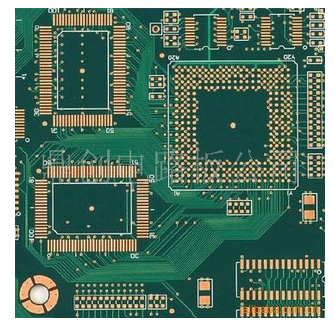Faced with a design, there are five important attributes to consider when conducting EMC analysis of a product and design:
(1) Key device size: the physical size of the emitting device that generates radiation. The radio frequency (RF) current will generate an electromagnetic field that will leak out of the housing. The length of the line on the PCB board as the transmission path has a direct effect on the RF current.
(2) Impedance matching: impedance of source and receiver, as well as transmission impedance between them.
(3) Time characteristics of interference signals: is this problem a continuous (periodic signal) event, or only exists in a specific operation

cycle (for example, a single time may be a keystroke operation or power-on interference, periodic disk drive operation or network burst transmission).
(4) Intensity of interference signal: how strong is the source energy level and how big is its potential to produce harmful interference.
(5) Frequency characteristics of interference signals: Use a spectrum analyzer to observe the waveform and find the position of the observed problem in the spectrum, which is convenient to find the problem.
In addition, some low frequency circuit design habits need to pay attention to. For example, my favorite single point grounding is very suitable for low frequency applications, but later found not suitable for RF signal applications, where there are more EMI problems. It is believed that some engineers apply single point grounding to all product designs without realizing that more or more complex emc problems may arise from using this method of grounding.
We should also pay attention to the current flow in the circuit components. Having circuit knowledge we know that current flows from high voltage to low voltage, and that current always flows through one or more paths in a closed loop circuit, so a small loop and an important law. For those where the interfering current is measured, the PCB wiring is modified so that it does not affect the load or the sensitive circuit. Applications that require a high impedance path from power to load must consider all possible paths through which the return current can flow.
There is also a PCB wiring problem. The impedance of a wire or line consists of resistance R and inductive reactance. At high frequencies, the impedance has no capacitive reactance. When the wiring frequency is above 100kHz, the wire or wiring becomes inductance. Wires or lines operating above audio may become rf antennas. In EMC specifications, wires or cables are not allowed to operate below λ/20 of a particular frequency (antennas are designed to be equal to λ/4 or λ/2 of a particular frequency), and when accidentally designed, the wires become a highly efficient antenna, which makes later debugging even more tricky.
Then talk about the layout of PCB., to consider the size of the PCB. When the size of PCB is too large, the anti-interference ability of the system decreases and the cost increases with the growth of wiring, while the size of PCB is too small and easy to cause the problems of heat dissipation and interference. Second, determine the location of special components (such as clock components) (it is better not to lay the floor around the clock line and not to walk up and down the key signal line to avoid interference). Third, according to the circuit function, PCB overall layout. In the layout of components, relevant components should be as close as possible, so as to achieve better anti-interference effect.